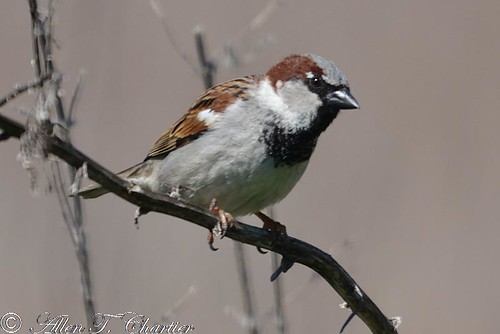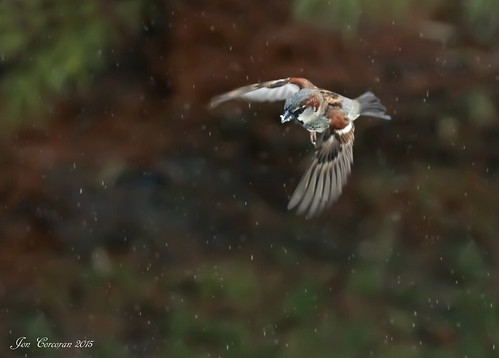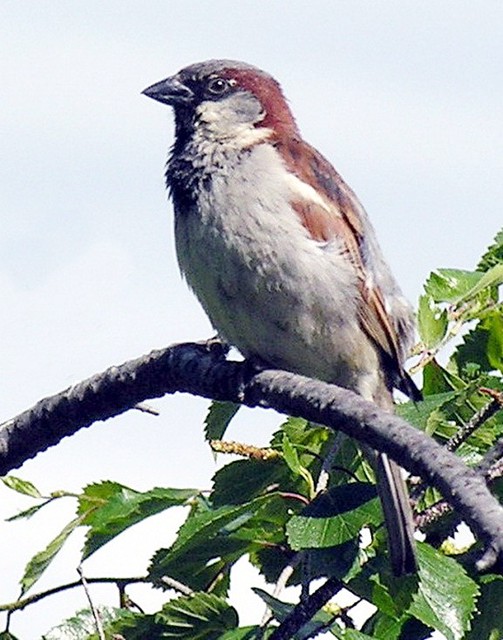House Sparrow
(Passer domesticus)
Conservation • Description • Habitat • Ecology • Distribution • Taxonomy
Conservation Status |
|
|||||||
| IUCN Red List | LC - Least Concern |
|||||||
| NatureServe | NNA - Not applicable SNA - Not applicable |
|||||||
| Minnesota | not listed |
|||||||
Description |
||
|
||
Size |
||
6″ to 6¾″ in length 9½″ wingspan |
||
Voice |
||
Similar Species |
||
Habitat |
||
Urban and suburban areas, agricultural areas, railroad yards, other developed areas |
||
Ecology |
||
Migration |
||
|
||
Nesting |
||
|
||
Food |
||
|
||
Distribution |
||||
Occurrence |
||||
Abundant year-round resident |
||||
Maps |
||||
The Minnesota Ornithologists’ Union All Seasons Species Occurrence Map |
||||
Taxonomy |
|||
| Class | Aves (Birds) | ||
Order |
Passeriformes (perching birds) | ||
Family |
Passeridae (Old World sparrows) | ||
Genus |
Bombycilla (waxwings) | ||
Subordinate Taxa |
|||
domesticus Group Eastern Mediterranean House Sparrow (Passer domesticus biblicus) Egyptian House Sparrow (Passer domesticus niloticus) European House Sparrow (Passer domesticus domesticus) Northwest African House Sparrow (Passer domesticus tingitanus) Persian House Sparrow (Passer domesticus persicus) Western Mediterranean House Sparrow (Passer domesticus balearoibericus)
indicus Group House Sparrow (Passer domesticus hyrcanus) House Sparrow (Passer domesticus hufufae) House Sparrow (Passer domesticus rufidorsalis) Indian House Sparrow (Passer domesticus indicus) Kashmir House Sparrow (Passer domesticus parkini) Turkestan House Sparrow (Passer domesticus bactrianus) |
|||
There are twelve subspecies of House Sparrow (Passer domesticus) currently recognized. In 1852, House Sparrows from England, Passer domesticus domesticus, were released in New York City. This was only the first of many introductions. Since then the species has evolved to adapt to its new environment. North American populations have been differentiated by size, wing length, and paleness. One author describes a pale form in northwestern states P. d. plecticus. Other than that, house sparrows in North America are not differentiated by named subspecies. |
|||
Synonyms |
|||
|
|||
Visitor Photos |
|||||
Share your photo of this bird. |
|||||
| This button not working for you? Simply email us at info@MinnesotaSeasons.com. Attach one or more photos and, if you like, a caption. |
|||||
Bill Reynolds |
|||||
2019 House Sparrow, Pennington County MN |
|||||
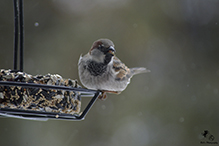 |
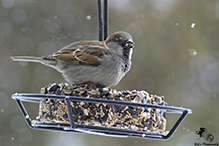 |
||||
MinnesotaSeasons.com Photos |
|||||
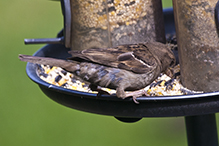 |
|||||


Visitor Videos |
|||
Share your video of this bird. |
|||
| This button not working for you? Simply email us at info@MinnesotaSeasons.com. Attach a video, a YouTube link, or a cloud storage link. |
|||
Avi Birds |
|||
| House Sparrow (Passer Domesticus) Aug 13, 2020 |
|||
About
In this video, we take a look at the House Sparrow, also known as the Passer domesticus. |
|||
Other Videos |
|||
| House Sparrow - HD Mini-Documentary James KnottJames Knott |
|||
About
Uploaded on Mar 23, 2009 http://quickdirt.com is my new mountain biking website. Check it out for more great adventures! Transcript: "The House Sparrow is considered to be the most widely distributed bird on the planet. It is native to Europe, Asia and parts of Africa. It was also introduced to the Americas, New Zealand and Australia. In North America it was introduced to several U.S. cities in the 1800s as a way to control pests and then quickly spread across the continent. This move was considered to be a mistake because the House Sparrow is an aggressive bird that will take over the nests of native species such as House Martins and Bluebirds. These house sparrows have taken over abandoned cliff swallow nests. The House Sparrow prefers human-affected areas such as urban, suburban and farm environments. It is rarely found in wilderness areas such as woods, grasslands or desert. These sparrows prefer to eat seeds and grain, but will also feast on flowers and insects. The House Sparrow is one of only three birds in the U.S. that is not protected by law from hunting. The other two are the Rock Pigeon and European Starling." |
|||
| House Sparrow Singing PontyCyclops |
|||
About
Published on Mar 19, 2012 My second go at filming with the Sony A77 ... only monopod held, so sorry for the wobble again. I'll try some with the tripod soon. |
|||

|
Created: Last Updated: © MinnesotaSeasons.com. All rights reserved. |
